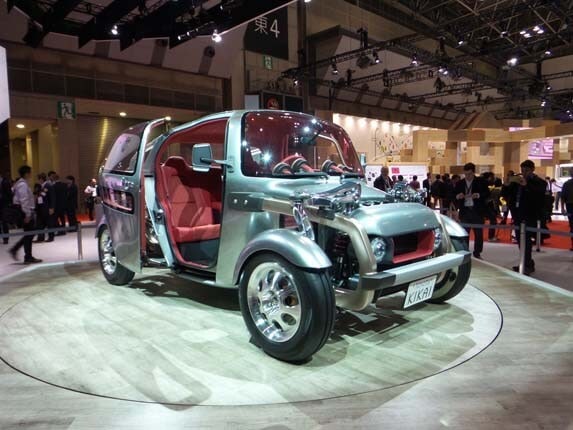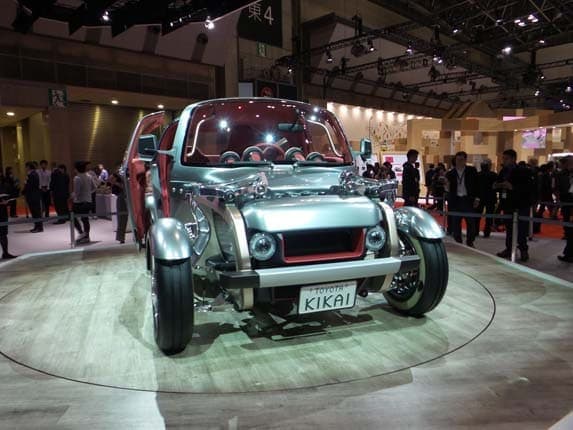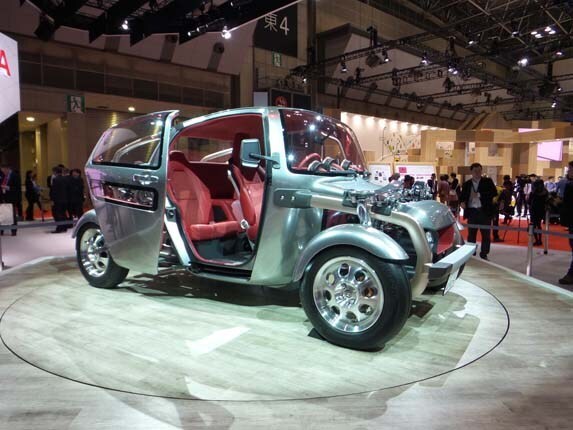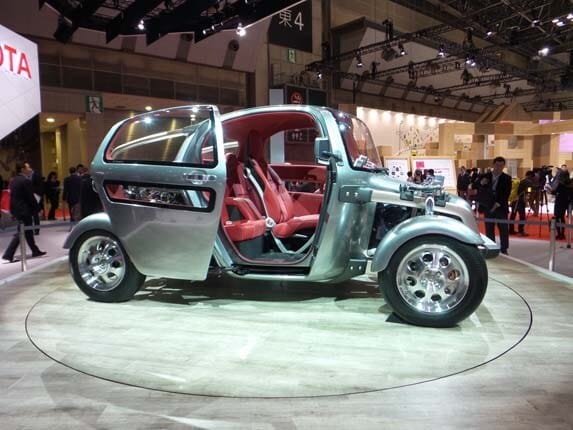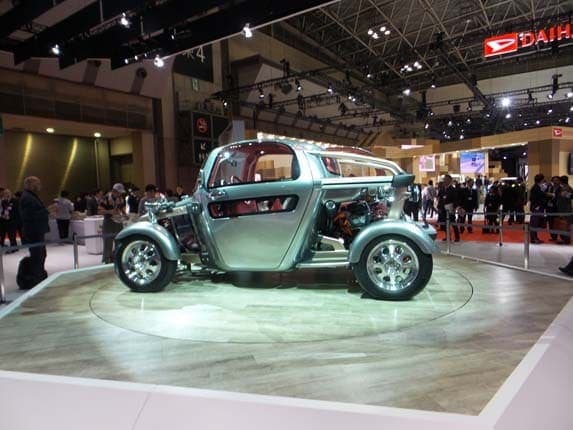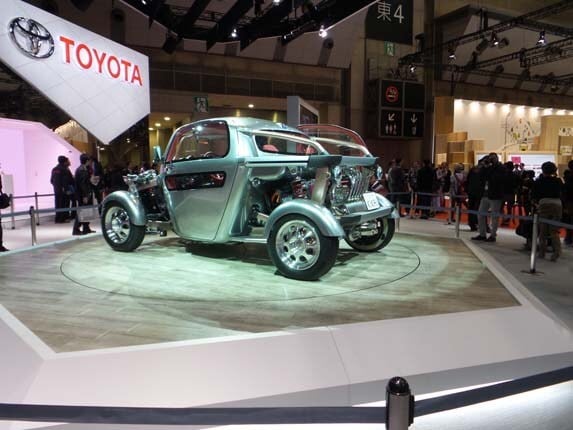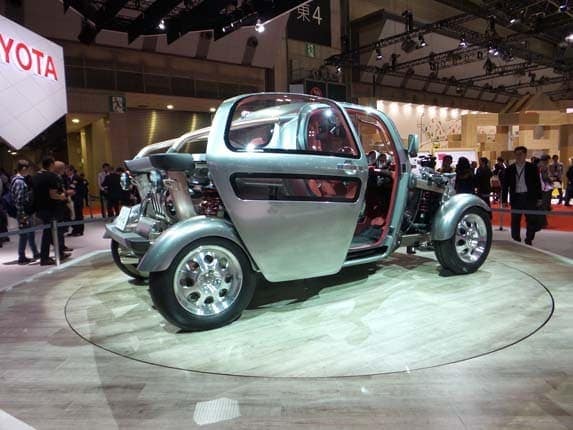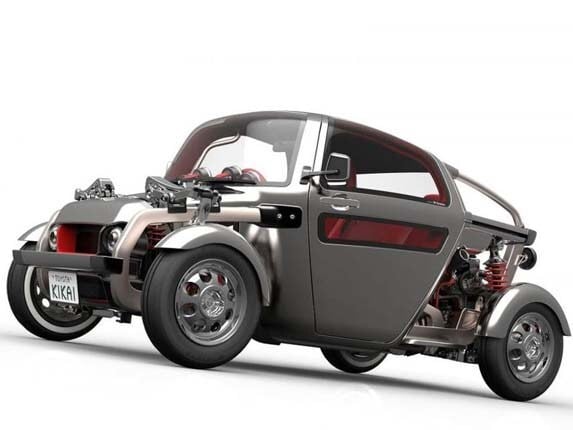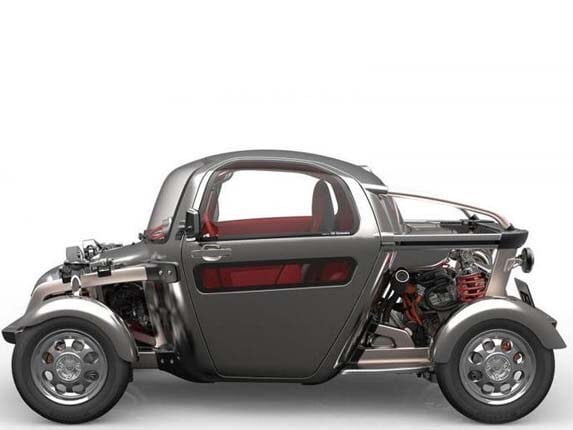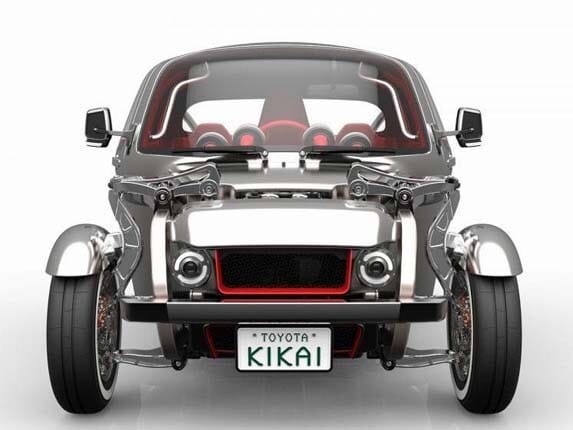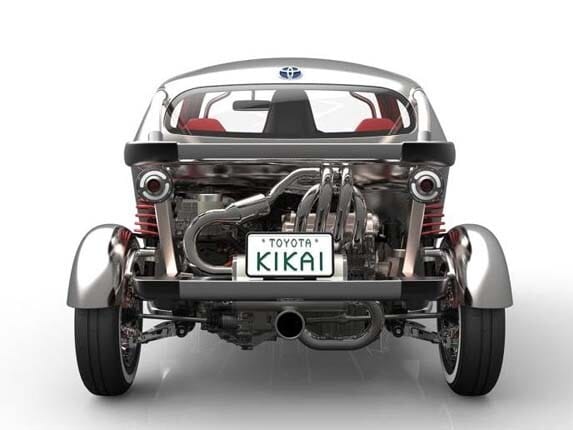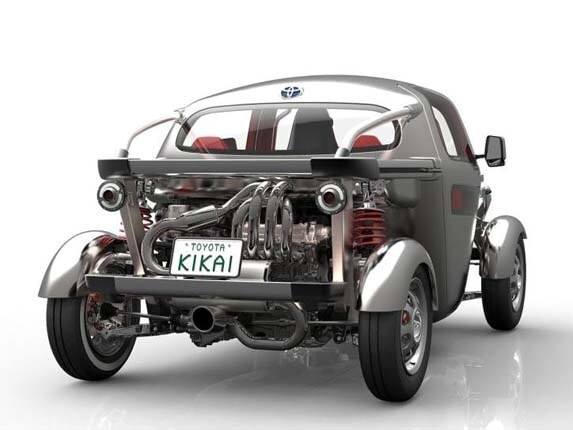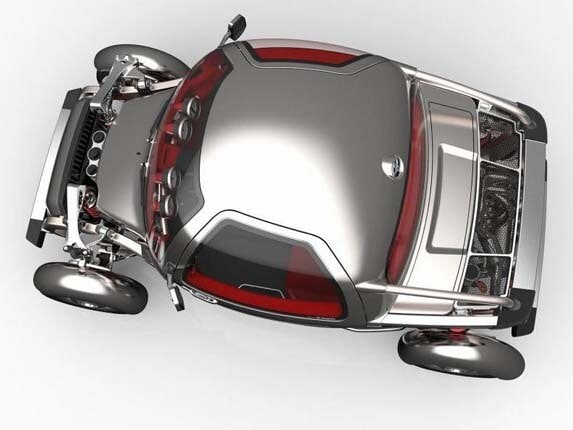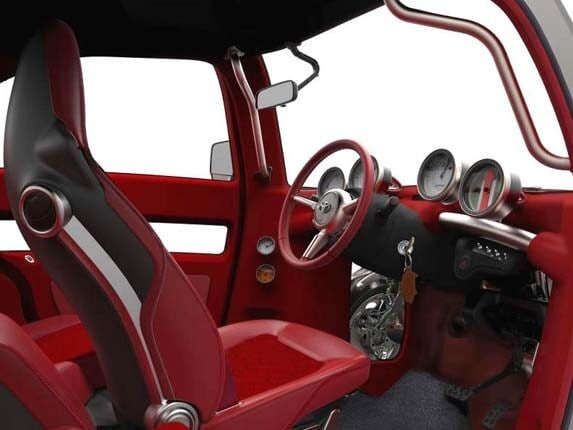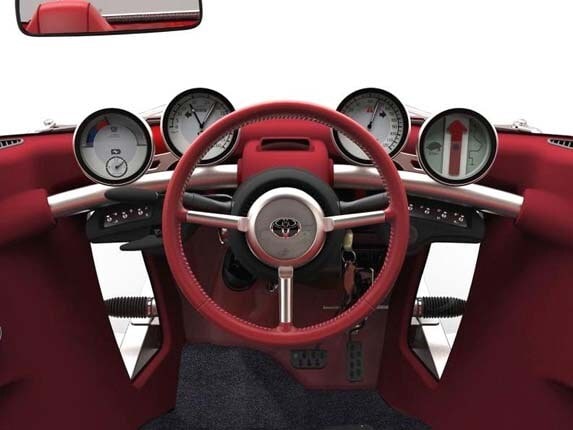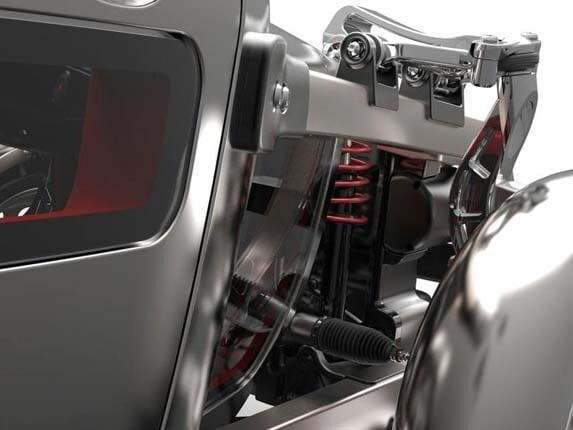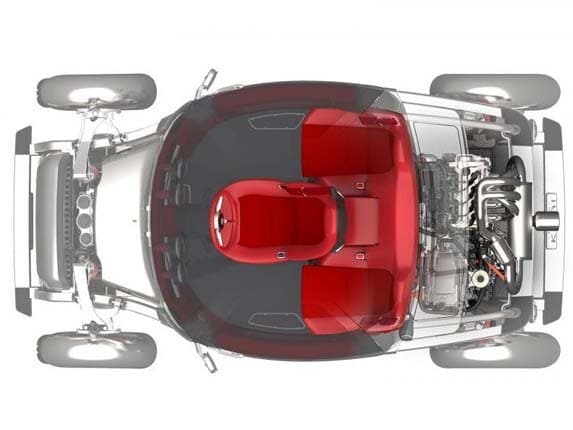Celebrating the usually hidden mechanical elements of a vehicle, the diminutive Toyota Kikai Concept is a minimalist exercise that simply lets it all hang out. Debuting at the Tokyo Motor Show, the Kikai’s unique form follows function to a fault making various components like the suspension, exhaust and fuel tank focal points and using supplemental view ports in the doors and firewall area to create a more intimate connection between man and machine for those within as it travels down the road.
Also: Class of 2016 — New Cars Ready to Roll
Barely 11 feet long, the Kikai Concept seats three with its two passengers flanking a center-positioned driver in a delta configuration. Although the Kikai’s decidedly Spartan cabin eschews modern givens like automatic climate control and infotainment in favor of more traditional instrumentation, one of the four pods on its dash does house the display for a rudimentary navigation system. Clearly no production plans for Toyota’s funky little funrunner, but there’s no denying its unqualified success in pointing out what the company says is "the appeal of the physical and tactile in a digital age."
More Concept Vehicles…
The Audi e-tron Quattro Concept previews the upcoming Q6 crossover
Mazda Koeru Concept offers a look at a new compact crossover model
Porsche Mission E Concept: a 600-hp EV on the fast track to production
POPULAR AT KBB.COM
